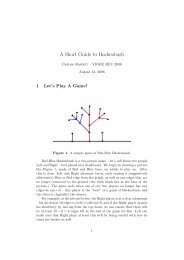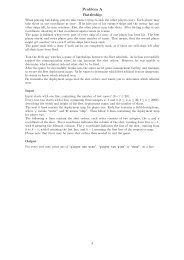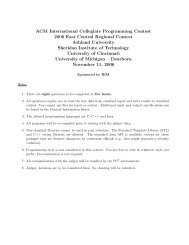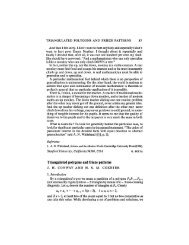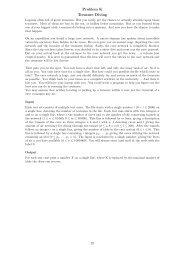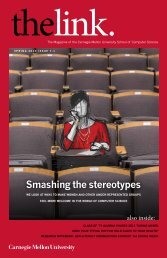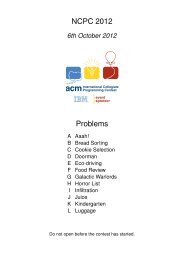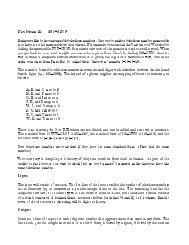Review1 of Liber De Ludo Aleae (Book on Games of Chance) by ...
Review1 of Liber De Ludo Aleae (Book on Games of Chance) by ...
Review1 of Liber De Ludo Aleae (Book on Games of Chance) by ...
Create successful ePaper yourself
Turn your PDF publications into a flip-book with our unique Google optimized e-Paper software.
which alters much <str<strong>on</strong>g>of</str<strong>on</strong>g> the foregoing Calculati<strong>on</strong>; for in this Case [the number <str<strong>on</strong>g>of</str<strong>on</strong>g> male and female terms]<br />
…will lean to <strong>on</strong>e side or the other.”<br />
However, he writes:<br />
“But it is very improbable (if mere <strong>Chance</strong> governed) that they would never reach as far as the<br />
Extremities…”<br />
While it would be possible to have large differences in the numbers <str<strong>on</strong>g>of</str<strong>on</strong>g> males and females (with<br />
binomially distributed data having probability 1/2), the probability <str<strong>on</strong>g>of</str<strong>on</strong>g> this becomes very small when n is<br />
large. C<strong>on</strong>trary to Arbuthnott’s argument, it could be reas<strong>on</strong>ed that chance would account for the<br />
approximate equality in numbers <str<strong>on</strong>g>of</str<strong>on</strong>g> males and females.<br />
The sec<strong>on</strong>d propositi<strong>on</strong> discounts chance as the cause for the larger number <str<strong>on</strong>g>of</str<strong>on</strong>g> male births observed<br />
annually. The form <str<strong>on</strong>g>of</str<strong>on</strong>g> the argument is interesting, because it is similar to a test <str<strong>on</strong>g>of</str<strong>on</strong>g> significance.<br />
Arbuthnott states the Problem:<br />
“A lays against B, that every Year there shall be born more Males than Females: To find A’s Lot, or the<br />
Value <str<strong>on</strong>g>of</str<strong>on</strong>g> his Expectati<strong>on</strong>.”<br />
A hypothesis is being made in the form <str<strong>on</strong>g>of</str<strong>on</strong>g> a wager. Arbuthnott notes that the probability that there are<br />
more males than females born must be less than 1 /2 (assuming that there is an equal chance for a male or<br />
female birth). For this “test” however, he sets the chance at 1 /2 (which would result in a higher<br />
probability), and notes that for the number <str<strong>on</strong>g>of</str<strong>on</strong>g> males to be larger than the number <str<strong>on</strong>g>of</str<strong>on</strong>g> females in 82<br />
c<strong>on</strong>secutive years (for which he has data <strong>on</strong> christenings), the lot would be 1/2 82 . The lot would be even<br />
less if the numbers were to be in “c<strong>on</strong>stant proporti<strong>on</strong>”. Since the data do not support B (in every year<br />
from 1629 to 1710, male christenings outnumber female christenings), Arbutnott reas<strong>on</strong>s:<br />
“From whence it follows, that it is Art, not <strong>Chance</strong>, that governs.”<br />
The hypothesis <str<strong>on</strong>g>of</str<strong>on</strong>g> equal probability is rejected, and Arbuthnott attributes the observed proporti<strong>on</strong>s to<br />
Divine Providence.<br />
The sec<strong>on</strong>d argument has been referred to as the first published test <str<strong>on</strong>g>of</str<strong>on</strong>g> significance 1 .<br />
1 Ian Hacking, The Emergence <str<strong>on</strong>g>of</str<strong>on</strong>g> Probability, page 168.<br />
20




